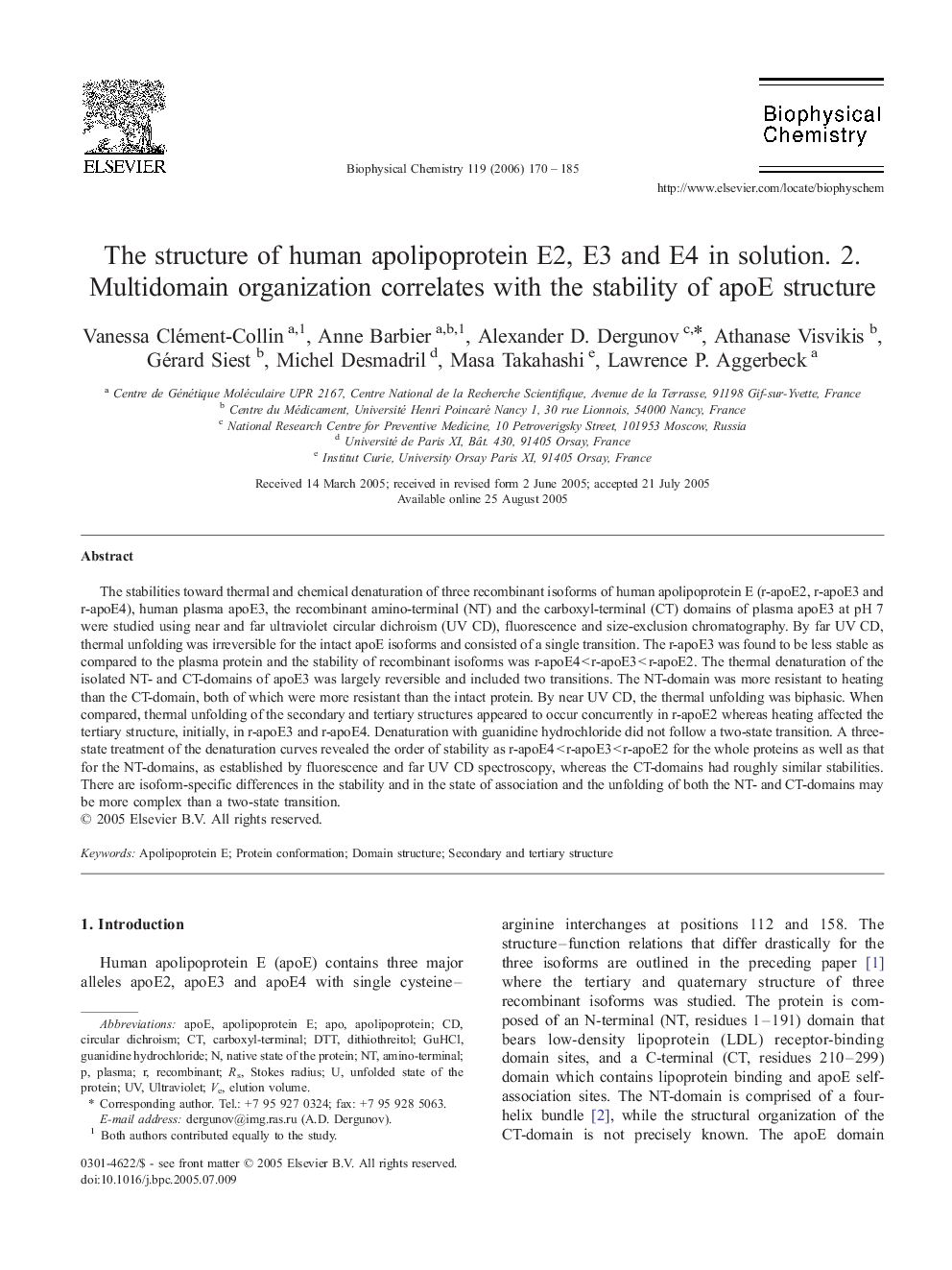| Article ID | Journal | Published Year | Pages | File Type |
|---|---|---|---|---|
| 5372536 | Biophysical Chemistry | 2006 | 16 Pages |
The stabilities toward thermal and chemical denaturation of three recombinant isoforms of human apolipoprotein E (r-apoE2, r-apoE3 and r-apoE4), human plasma apoE3, the recombinant amino-terminal (NT) and the carboxyl-terminal (CT) domains of plasma apoE3 at pH 7 were studied using near and far ultraviolet circular dichroism (UV CD), fluorescence and size-exclusion chromatography. By far UV CD, thermal unfolding was irreversible for the intact apoE isoforms and consisted of a single transition. The r-apoE3 was found to be less stable as compared to the plasma protein and the stability of recombinant isoforms was r-apoE4Â <Â r-apoE3Â <Â r-apoE2. The thermal denaturation of the isolated NT- and CT-domains of apoE3 was largely reversible and included two transitions. The NT-domain was more resistant to heating than the CT-domain, both of which were more resistant than the intact protein. By near UV CD, the thermal unfolding was biphasic. When compared, thermal unfolding of the secondary and tertiary structures appeared to occur concurrently in r-apoE2 whereas heating affected the tertiary structure, initially, in r-apoE3 and r-apoE4. Denaturation with guanidine hydrochloride did not follow a two-state transition. A three-state treatment of the denaturation curves revealed the order of stability as r-apoE4Â <Â r-apoE3Â <Â r-apoE2 for the whole proteins as well as that for the NT-domains, as established by fluorescence and far UV CD spectroscopy, whereas the CT-domains had roughly similar stabilities. There are isoform-specific differences in the stability and in the state of association and the unfolding of both the NT- and CT-domains may be more complex than a two-state transition.
